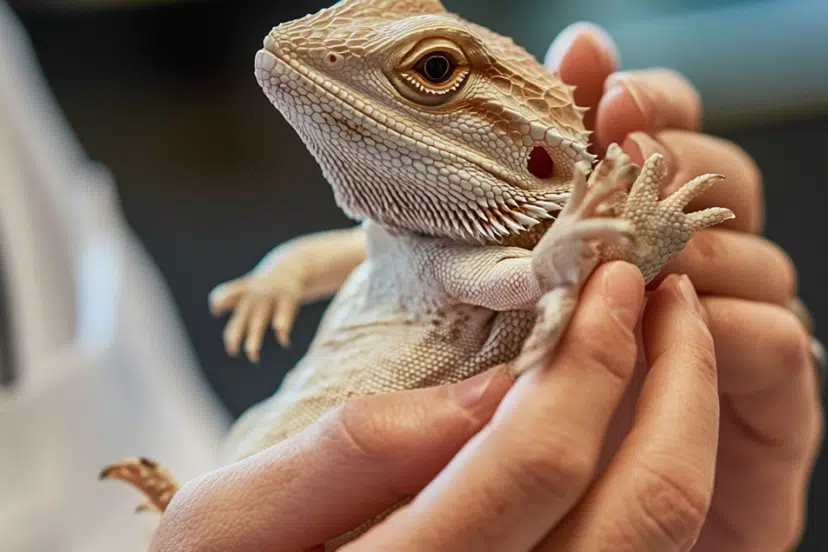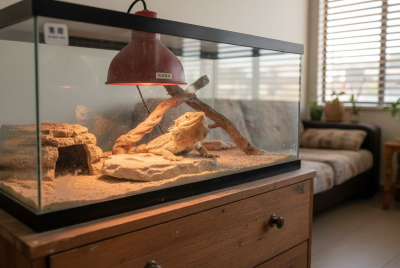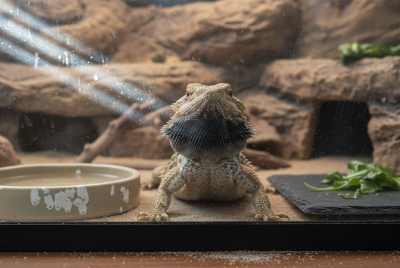Bearded Dragon Sexing: How to Tell if Your Dragon Is Male or Female
When you first get a bearded dragon, one of the questions that will likely cross your mind is, “Is my bearded dragon male or female?” Sexing a bearded dragon can seem confusing at first, but with the right approach, it’s a straightforward process. In this article, I’ll walk you through various methods for identifying the sex of your bearded dragon, explain why it’s important, and address some common misconceptions.
Why It’s Important to Know Your Dragon’s Sex
Knowing whether your bearded dragon is male or female is crucial for several reasons. It helps with proper care, housing, and management, especially if you’re thinking about introducing another dragon or even breeding. Males and females have different behaviors and needs, and understanding those differences will make you a more responsible pet owner.
Physical Differences Between Male and Female Bearded Dragons
The most reliable way to sex your bearded dragon is by observing physical differences. While young dragons may be more difficult to identify, as they grow, these features become more pronounced.
The Role of Hemipenal Bulges
The most well-known method for sexing a bearded dragon is checking for hemipenal bulges. Male bearded dragons have two distinct bulges along the underside of their tail, near the vent (cloaca). Females, on the other hand, have a single bulge or no noticeable bulge at all. To see this clearly, gently lift your dragon’s tail at a 90-degree angle and observe the tail base.
Femoral Pores: What to Look For
Another method is examining the femoral pores located on the underside of your bearded dragon’s thighs. These pores, which secrete pheromones, are more pronounced and visible in males, especially during breeding season. Females also have femoral pores, but they tend to be smaller and less noticeable.
Tail Size and Shape: A Key Indicator
Tail size can also be an indicator of sex. Male dragons typically have thicker, wider tails at the base compared to females. However, this trait can be harder to distinguish without experience or comparison.
Behavioral Differences Between Male and Female Dragons
Aside from physical traits, behavioral cues can also help determine the sex of your bearded dragon. While not foolproof, some behavioral patterns are more commonly associated with males or females.
Aggression and Territorial Behaviors
Male bearded dragons tend to be more territorial and may show aggression, especially toward other males. They might exhibit dominant behaviors like puffing out their beards, head bobbing, or flattening their bodies to appear larger. Females can also be territorial but are generally more passive.
Head Bobbing vs. Arm Waving
Male bearded dragons frequently perform rapid head bobbing to assert dominance or attract mates. Females, on the other hand, are more likely to display arm-waving, a submissive gesture often seen when they encounter more dominant dragons or feel threatened.
Mating and Reproductive Behaviors
Females may lay eggs even if they haven’t been in contact with a male, a behavior known as “gravid” or egg-laying. Male dragons may become more aggressive during the breeding season, showing increased territorial behavior and dominance displays.
The Best Time to Sex a Bearded Dragon
When is the best time to determine your dragon’s sex? Let’s look at how age and other factors influence sexing.
Age and Maturity Considerations
It’s much easier to sex a bearded dragon once they reach 6-12 months of age. Before this point, their physical traits aren’t fully developed, and it’s easy to misinterpret certain features. For younger dragons, patience is key, as rushing to sex them can lead to incorrect assumptions.
The Impact of Health and Environment on Sexing Accuracy
A stressed or unhealthy bearded dragon may exhibit behaviors that make sexing difficult. Ensure that your dragon is comfortable and in good health before attempting to sex them, as this will provide the most accurate results.
Methods for Sexing a Bearded Dragon
There are a few tried and tested methods for identifying your bearded dragon’s sex. Let’s go over them step by step.
Visual Inspection: How to Do It Correctly
The most common method for sexing a bearded dragon is through a visual inspection of the tail base. As mentioned earlier, lifting the tail and looking for hemipenal bulges is the quickest way to determine sex. However, be gentle when lifting the tail to avoid causing any discomfort.
The Flashlight Method: Step-by-Step Guide
If the visual inspection isn’t clear, you can use the flashlight method. This involves shining a small flashlight through the base of the tail. For males, you’ll see two dark shadows (hemipenes), while females will have only one or none. This method is particularly useful for younger dragons where bulges are less pronounced.
The Probing Method: Is It Safe for Beginners?
Probing is a method used by veterinarians or experienced breeders, where a small probe is gently inserted into the vent to determine the sex. While accurate, it’s not recommended for beginners, as improper technique can harm your dragon.
Common Mistakes When Sexing a Bearded Dragon
It’s easy to make mistakes when sexing your dragon, especially if you’re new to bearded dragon care.
Misinterpreting Physical Traits
Sometimes, owners misinterpret the lack of hemipenal bulges in younger males as a sign they are female. Patience is key—waiting for your dragon to mature ensures a more accurate identification.
Age-Related Mistakes
Trying to sex a bearded dragon too early (under 3-4 months) can lead to incorrect assumptions. If your dragon is still young, it’s best to wait until they are more developed before determining their sex.
Why Knowing Your Dragon’s Sex Matters for Care and Breeding
Understanding your dragon’s sex plays a crucial role in their care, particularly if you plan to house multiple dragons or are considering breeding.
Housing and Aggression Management
If you have multiple bearded dragons, knowing their sex is important for preventing aggression. Males should not be housed together due to their territorial nature, and even females can sometimes become aggressive if space is limited.
Health Concerns Related to Breeding
Female dragons may lay eggs even without a mate, which can lead to health issues like egg binding if not monitored. Providing proper nutrition and nesting conditions is essential for a gravid female.
Ethical Breeding Practices
If you’re planning to breed your bearded dragons, it’s important to be responsible. Ensure both dragons are in good health, and avoid overbreeding, as this can lead to stress and health complications.
Conclusion: Be Confident in Sexing Your Bearded Dragon
Sexing your bearded dragon is an essential part of their care and well-being. While it may seem tricky at first, with the right methods and patience, you can confidently identify whether your dragon is male or female. Remember to handle them gently, and always prioritize their health and comfort during the process. By understanding their sex, you can ensure they receive the care they need and create a happier, healthier environment for them.
FAQs
- At what age can you accurately sex a bearded dragon?
Typically, you can determine the sex of a bearded dragon once they are around 6-12 months old when their physical features are more developed. - Can a bearded dragon’s behavior indicate its sex?
Yes, males are more likely to display territorial behaviors like head bobbing and be more aggressive, while females may show more arm-waving as a submissive gesture. - What should I do if I’m unsure of my dragon’s sex?
If you’re uncertain, try multiple methods like visual inspection or the flashlight method. For more accuracy, consult a vet or a professional breeder. - Can I house two male bearded dragons together?
No, males are highly territorial and may fight if housed together. It’s best to house them separately to prevent aggression. - Is it safe to use the probing method at home?
The probing method is best left to experienced veterinarians or breeders, as improper probing can cause injury to your dragon.
By following the tips and methods outlined in this guide, you’ll gain confidence in sexing your bearded dragon and providing the best possible care for them!




